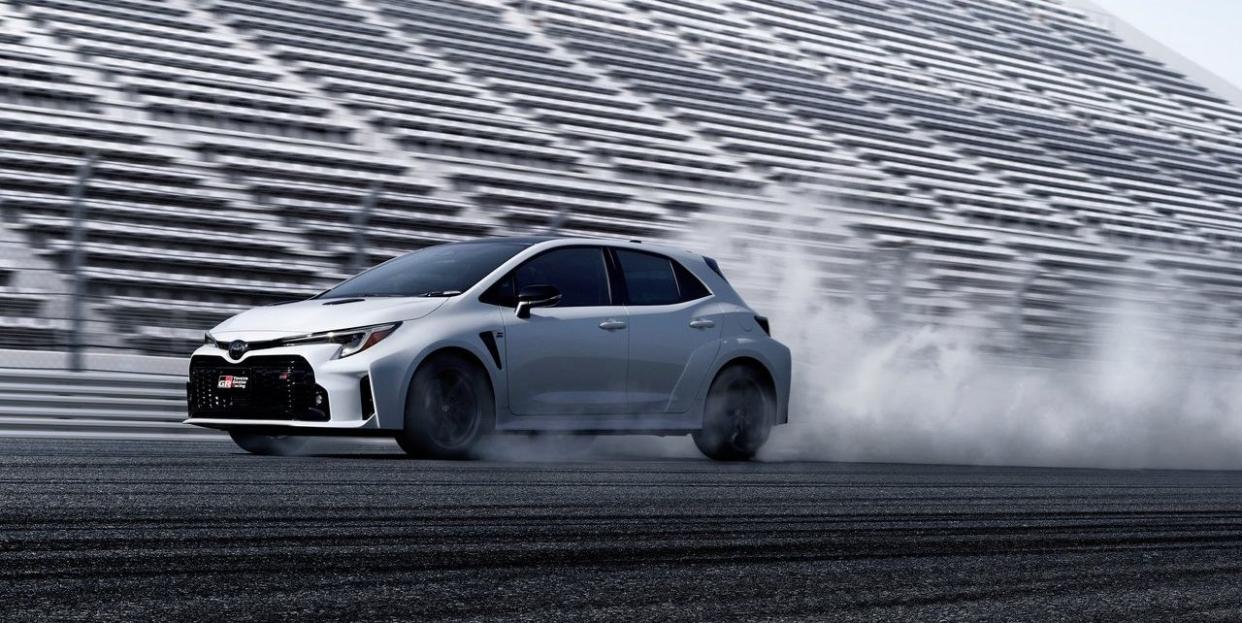Toyota Made the GR Corolla’s AWD More Complicated So It Could Feel Simpler

When I first drove the GR Yaris, I was amazed by how natural the car's power delivery felt. Today's all-wheel-drive systems are almost always too clever by half, shuffling power around behind the scenes and rarely proving consistent enough to understand intuitively. But that isn't true of the GR Yaris. In his new video, Jason Fenske from Engineering Explained breaks down what goes into making that system so good.
That same system is what's coming to the U.S. in the GR Corolla, which we hope is as riotous to drive as the homologation special sold abroad. It operates in a way that is utterly transparent to the driver. The standard drive mode has a front/rear power split of 60/40, making it lightly front biased, sport mode has a 30/70 split fit for powerslides, and track mode has a 50/50 split for maximum velocity. It's so simple and so effective that I was shocked that most other performance cars haven't adopted it.
Now, torque splits sound self-explanatory, but they don't exactly operate as you'd think. Here is a great and clear breakdown from our colleagues at Car and Driver:
"Whenever manufacturers talk about their all-wheel-drive systems, there’s always blather about where the torque is going and in what proportion. This is all theoretical, based on assumptions that are rarely true. When wheelslip occurs in the real world, torque distribution is ultimately determined by the available traction at each tire. That makes torque split a function of load transfer and the friction of the road surface, as much as it is a consequence of the differential configuration. When a manufacturer talks about a 50/50 torque split, it assumes equal grip at each axle, a condition that is unlikely to occur in any situation where you most need all-wheel drive. Likewise, the ability to send 100 percent of the torque to a single axle typically does not mention the caveat that the opposite axle must be spinning its wheels on a surface with almost no friction. (On-demand couplings are the exception to this, as some can send 100 percent of the torque to one axle by decoupling the other.) Because both grip and weight distribution are constantly changing, the quoted torque splits become largely meaningless in the real world. Think of manufacturers’ torque-split talk as akin to promises from presidential candidates: When reality sets in, results may vary."
We'll disagree with that last point. In the real world, the non-variable, set torque splits on Toyota's GR cars make a big difference in how the cars drive. You adapt to the car; the car is not adapting to you. Drive a Jaguar F-Type hard, for instance, and its AWD will throw torque at the front axle the moment the rear starts to slip. It robs you of the fun you thought you were going to have.
As it turns out, making such a simple-t0-use system is quite complicated. Fenske explains that, while the rear clutch pack can easily engage with precisely enough torque to split any given amount of torque up between the two wheels, how much it has to engage to keep the split even is changing constantly. At wide-open throttle and high RPMS, the clutch pack has to bite with serious force to keep everything evenly split. But as soon as the driver lets off, it has to rapidly reduce its engagement torque to keep things from swinging out of balance.
How exactly that works is the kind of wizardry only Fenske can explain. But if you're interested in the machinations behind great cars—and the additional complications, like cooling the clutch and making sure it's durable enough for heavy use—we highly recommend watching the whole thing.
You Might Also Like
